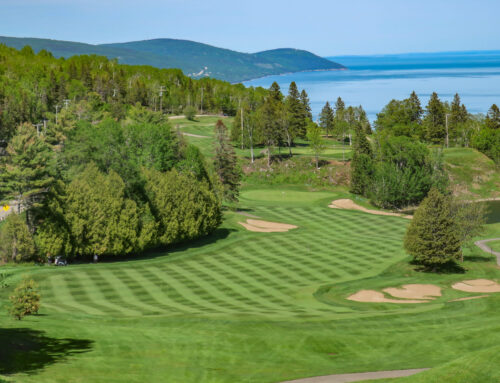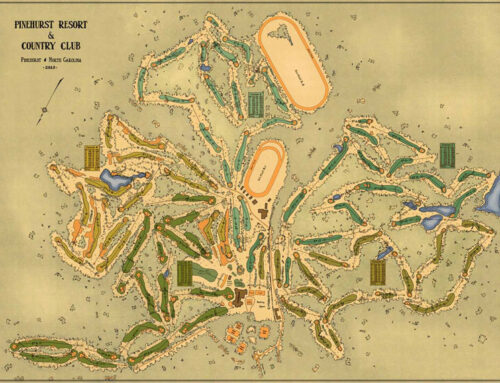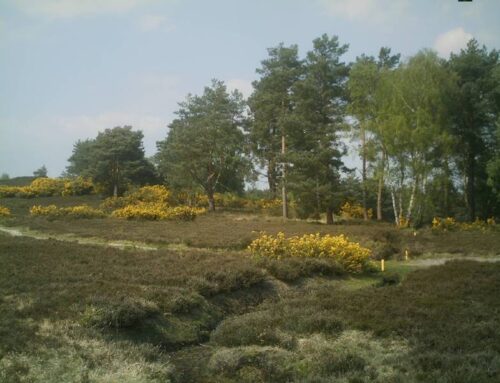Ask a group of people for their favourite movie genres, and chances are, you will get a variety of responses. Comedy is a classic, although action is a big genre and as a result, many people like action. Thrillers are popular these days, as are horror movies, and who does not like a good romantic comedy?
On a 2022 trip to Rochester, New York, the question came alive with the juxtaposition between the purpose of Donald Ross’ Monroe and Oak Hill’s East serve. Furthermore, friends of mine had done the same two courses earlier this summer and had the opposite opinion of mine: they liked Monroe over Oak Hill’s East course.
This is not exactly a first-time example, either. There are a sizeable group of golf nerds who like Toronto Golf Club over St. George’s, or even Winged Foot East over West. Perhaps golf courses had genres? That would explain the patterns, after all. Generally speaking, the same people who like National Golf Links over Shinnecock also like Monroe over Oak Hill, or Toronto over St. George’s (and vice versa), or at least in my experience in discussions. If you like Once Upon a Time… in Hollywood over Pulp Fiction, chances are, you will like The Social Network over Zodiac, and so forth. Let us explore.
The US Open Genre

Examples include: Winged Foot (West), Shinnecock Hills, Oak Hill (East), St. George’s, Oakmont, etc
We all know what a US Open course entails. Thick, deep rough with tighter fairways and firm, slick greens. However, not every course that uses this mantra hosts a US Open, and as such, a genre is born. Most parkland golf courses that host championships would fall under this genre, and especially those that host the US Open (or a similar style event). The way I see a US Open golf course is those who enjoy the difficulty of their golf course, host an event every-so-often, and have that “big ballpark” feeling. The features are large, the golf is demanding, and the members like that.
The Member Course Genre

Examples include: Toronto, Monroe, National Golf Links of America, San Francisco, Winged Foot (East), Glens Falls
In contrasting Monroe with Oak Hill’s East course, the style is vastly different. Oak Hill is an exacting test of ball-striking, whereas Monroe is a more friendly golf course tee-to-green, yet the greens feature as much interest (if not more). The same can be said about Toronto Golf Club vs St. George’s, where St. George’s is a difficult test of ball-striking, Toronto lets you get away with a bit more until you get green-side. Is that the theme of a so-called “members course?” Not that any of the US Open style venues are not enjoyable, but the idea of a golf course slightly more generous off the tee while challenging around the greens seems built to be a “members course.” The genre is much more focussed on match play, where the US Open genre is a stroke play venue. At a members course, replay value is high, and the weight of a match is all that matters.
The Adventure Genre

Examples include: Jasper Park Lodge, Cypress Point, Kittansett, Cabot Links, Sagebrush
The adventure course is the most playful of the bunch, and not always seen as the most difficult per-say, but do a great job of showcasing the site. Typically, the courses have multiple environment’s the architect tries to show off. At Jasper Park, for example, you have the meadow, the mountain, and the lake. It is hard not to like these golf courses as they emphasize “fun” over anything else. Likewise for the other examples, where they show off numerous landscapes or ecosystems, all while tying it together.
The Faux-Links Genre

Examples include: Pacific Dunes, Streamsong (Black), Cabot Cliffs, Gamble Sands
This is a fairly new genre as architect’s like Bill Coore, Tom Doak, Gil Hanse, and more have become the face of the industry. Typically, these feature big fairways and greens, expansive, captivating bunkers, and a very natural look and feel. They work with the land, but have that modern look that has them defined in their own style. The most defining factor is room off the tee with large-scale greens, but trouble lurks on the wrong side of either the fairway or the greens. The majority of modern golf courses fall into this theme, especially in destination golf.







Leave A Comment